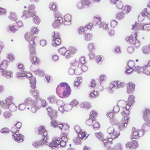CPT codes: 99214-25, 27096, J3301 x1 ICD-9: 720.2, 720.0, 787.02 ICD-10: M46.1*, M45.9*, R11.0 This encounter is coded as 99214 because it includes: Detailed history; Comprehensive examination—eight systems counted; and Medical decision making—moderate complexity (established problem, new problem with no additional workup; new prescription drug ordered). Keep in mind, the CT guidance is an inclusive…

How Non-Transferable EHRs Have Affected Physician Practices
Full disclosure: I am not a rabid fan of dogs. None rank among my best friends. Perhaps my antipathy stems from a memorable childhood event, when I was chased down the street where I lived by a neighbor’s large and not-so-friendly hound. He seemed to be twice my size, and this explains why I may…

Nurses May Be Key to Long-Term Clinical Trial Success
After completing a 10-year clinical trial examining treatment strategies for rheumatoid arthritis, Dutch researchers used a questionnaire to determine the study conditions and individual motivators that kept 60% of patients participating long term…
Online Tools Can Help Manage Pain
(Reuters Health)—People with chronic pain may be able to use online tools to manage their symptoms, lessening the need for frequent doctor visits, an Australian study suggests. Researchers tested a series of web-based pain management tutorials on a group of adults who had been suffering symptoms for more than six months. Regardless of how much…
Screen Type 1 Diabetes & Pediatric Rheumatology Patients for Celiac Disease
NEW YORK (Reuters Health)—Screening for celiac disease (CD) is important in patients newly diagnosed with type 1 diabetes (T1D) and in children presenting for rheumatology evaluation, according to a pair of new reports. In a systematic review, online June 15 in Pediatrics, Australian researchers found most cases of CD are diagnosed within five years of…
Knee Osteoarthritis Pain Worse with Insomnia
(Reuters Health)—People suffering from osteoarthritis, the most common type of joint inflammation, are more likely to have knee pain when they also have difficulty getting enough sleep, a study suggests. Researchers found that people with knee osteoarthritis and insomnia were also more likely to suffer from a nervous system disorder called “central sensitization” that makes…

The ACR’s RISE Registry Can Help Rheumatologists Improve Patient Care
“RISE is a tool designed by rheumatologists, for rheumatologists. I would encourage everyone to give it a try, watch our demo and learn about our results. We now have over 900,000 patient encounters, and the growth of the registry has been amazing. With your participation, it will develop into a powerhouse of knowledge. It’s so…

HIV Infection: What Rheumatologists Need to Know
It has been nearly 35 years since the original descriptions of what now is recognized as AIDS (the acquired immune deficiency syndrome), an advanced form of infection secondary to the human immunodeficiency virus (HIV). The epidemic of HIV infection remains the singular most dramatic epidemic of our generation and will likely remain with us for…

Eosinophilia: A Diagnostic Evaluation Guide for Rheumatologists
Clinical Vignette A 45-year-old woman with long-standing asthma and chronic sinusitis has new-onset peripheral neuropathy, arthralgias, fatigue, progressive dyspnea and a nonproductive cough. She has never smoked and has no environmental exposures. Her medications include an albuterol metered-dose inhaler (which she uses daily); an inhaled corticosteroid, montelukast; and ibuprofen (which she takes occasionally). She is…

Rheumatoid Arthritis, Periodontal Disease Link Suggests Benefits in Behavioral Change
Although compelling data exist to support a link between periodontal disease (PD) and the development of rheumatoid arthritis (RA), cementing the association will require extensive investigative work.1 However, in reviewing the literature of the past 10 years, Elliot D. Rosenstein, MD, director, Institute for Rheumatic and Autoimmune Diseases at Overlook Medical Center, Summit, N.J., and…
- « Previous Page
- 1
- …
- 47
- 48
- 49
- 50
- 51
- …
- 87
- Next Page »